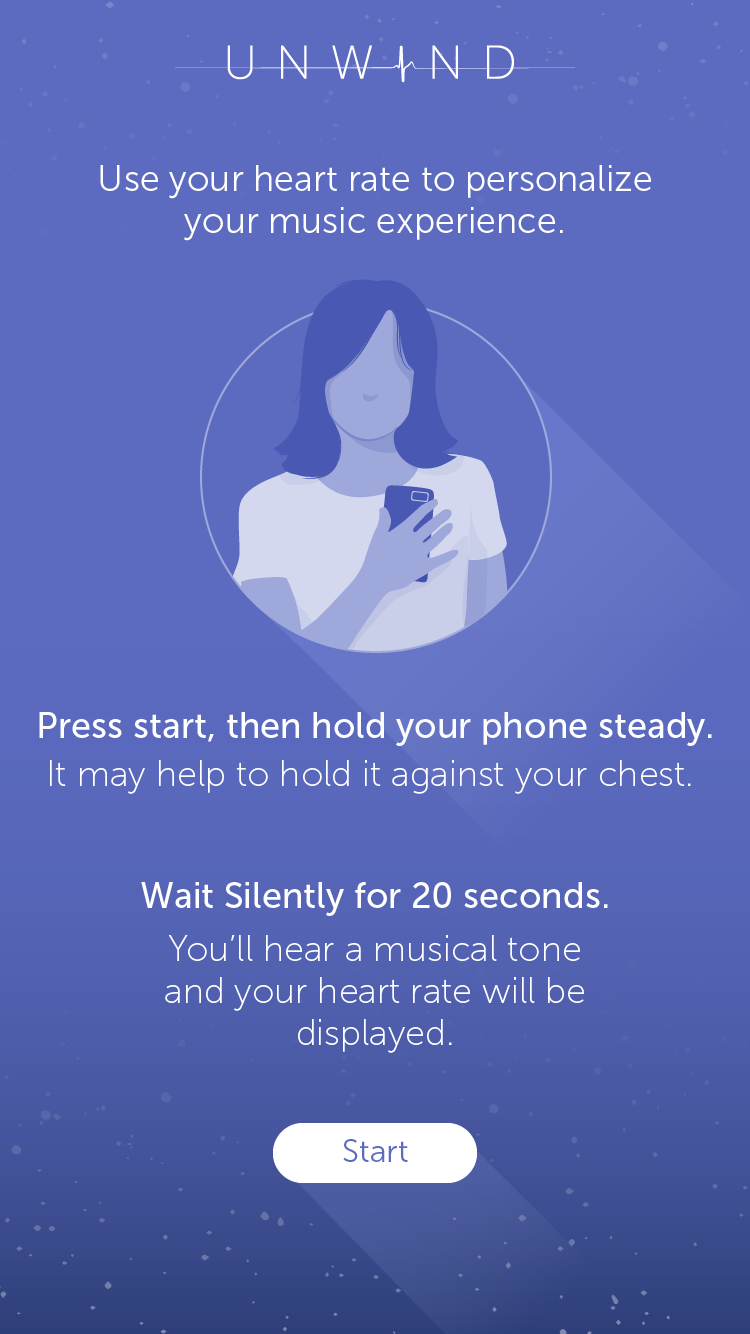Product Type
Consumer Wellness, Mobile and Cloud Application, Therapeutic Audio Content
Role
Design Director
Composer
Timeline
1 Year…and then some.
Projects & Activities
Generative/Adaptive Audio System Design
Mobile App Experience Design
Music and Sound Direction & Composition
Against the backdrop of an ongoing opioid crisis, the case is clear for non-pharmacological interventions in health and wellness.
At Sync Project, our mission was Music as Medicine; we developed a personalized music platform for pain relief and stress reduction, and Unwind Music was the consumer-facing application of this concept.
I was Design Director, and some of my proudest career moments happened with this entrepreneurial band of engineers, researchers, and data scientists.
Yeah, that’s me in the middle with my arm around Peter Gabriel. He just happened to be on our advisory board, along with St. Vincent, and Esa-Pekka Salonen. Talk about keeping good company!
Could sensors and software serve as a proxy for a music therapist?
Therapeutic Roots
In Search Of…ISO Principal
The term iso principle is unique to the field of music therapy. It was first introduced in the late 1940’s by psychiatrist and pioneer music therapist Ira Maximillian Altshuler as a method of mood management in which the music therapist provides music that matches their client’s mood, then gradually changes the music to help the client shift to a different mood.
This is the root concept for Unwind.
We would meet people where they are from a physiological perspective, using heart rate or respiration as an indication of arousal state. From there we had two goals:
First: Play music that would best suit their current state, with just the right amount of energy or distraction.
Second: Gradually modulate the musical program over time, guiding the user toward a desirable relaxation target.
Dr. Suzanne B. Hanser, founding chair of the Music Therapy Department at Berklee College of Music
Phase 1: Proof of Concept
We started with an easily distributable WebApp, relying on smartphone accelerometer data to capture heart rate. Music was commissioned from Marconi Union, an original piece which we “deconstructed” for generative playback within our system.
Phase 2: Going Native
The Million Song Project, Sync Music Bot, and the Unwind WebApp were generating buzz, customers, and lots of data. The next phase of product development was a native iOS app that would bring the full potential of generative and adaptive music to life.
First Things, First
Our understanding and expression of the system and experience we were building was evolving. As we refined the concepts, I translated our many hours of whiteboard scribblings and sketches into visualizations we could socialize with stakeholders and investors.
While we were busy inventing new music tech, I was also jamming on requirements, user stories, and workflows for the forthcoming app.
Sound Craft
After a day of product design, I’d go home to work in the studio, digging deeper into how this kind of music might actually be composed, produced, and published for our system.
Below, you can see a very practical DAW example featuring instrument tracks. Notice the deliberate reduction in activity and layers, over time.
After exporting as individual clips and samples, our system would intelligently perform the piece based on the available user state data.
The listening “energy ramp” can also be visualized through the spectral frequency display below. By using musical and sound design craft, we can emulate the real-time choices of a music therapist in the room, modulating toward rest.
Time to Play
I went for a simple palette with a celestial feel. With a few quick taps, you could find a track you like, add your biometric info via a connected wearable, or simply provide a little self-report on your current state. From there, your musical intervention would unfold, gradually guiding you toward a relaxed and restful destination.
If you’ve made it this far, you may be wondering what Unwind might actually sound like!
You can sample one of my original compositions for Unwind below. It’s comprised of dozens of individual audio samples, and designed to be performed seamlessly by the generative and adaptive audio system.
The example is a static rendering; in Unwind they would never play the same way twice. Performances would be tailored to your unique physiological inputs and needs, in the moment.
Ending on a High Note
Sync Project was acquired by Bose Corporation in 2018. We arrived there as a full team, with fresh IP in Sync Music Bot and our Unwind Generative Audio application. Our mission was to improve people’s wellness through better sleep. Read more about my story with Bose here.
As with all my work stories, there’s much more to talk about, so please reach out via the contact form to set up some time.








